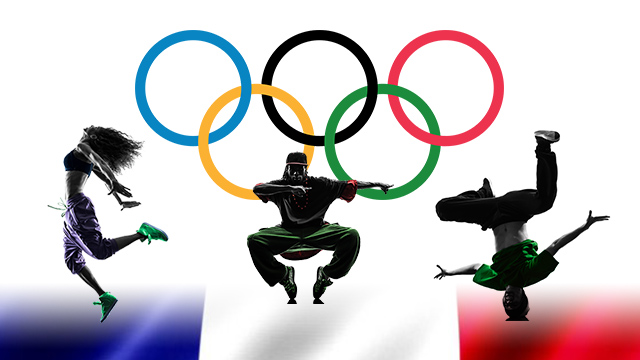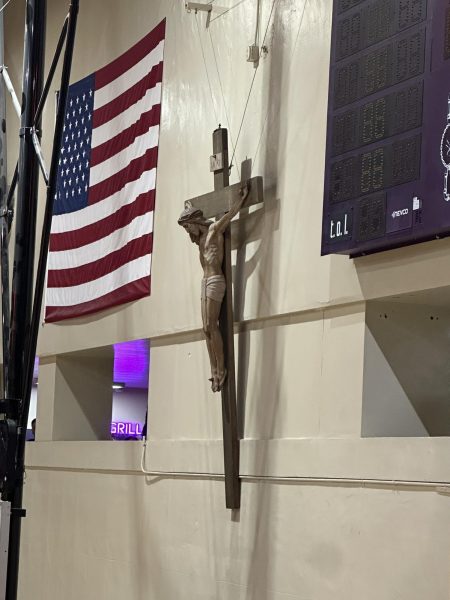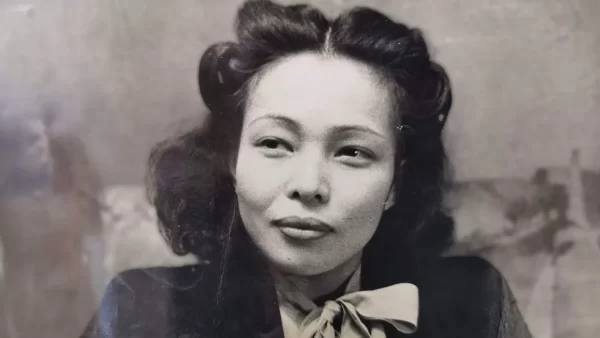Breakdancing pops onto Olympic stage, locks in fans for Paris 2024 Games
Breakdancing, which was at its peak in the 1980s, will be an Olympic event in the Paris 2024 games.
May 26, 2021
On Dec. 7, The International Olympic Committee officially declared that breakdancing, along with skateboarding, climbing, and surfing, are the lineup of sports set to debut at the Paris 2024 Olympics.
This decision was made after positive viewership of the sport in the 2018 Youth Olympics, and trial runs will be held this summer in Tokyo. While this clear attempt to create a more modernized scene at the games may prove successful in attracting a younger audience, some believe that this will devalue the sports cultural significance.
 Breakdancing, or breaking, which was created by African-American and Latino street performers in the 1970s in New York, is an acrobatic form of dance that includes complex headspinds, footwork, and flips. Inspired by kung-fu and gymnastics, the athletic dance quickly gained popularity throughout the 1980s and 90s after mainstream media promoted it in music, television, and magazines.
Breakdancing, or breaking, which was created by African-American and Latino street performers in the 1970s in New York, is an acrobatic form of dance that includes complex headspinds, footwork, and flips. Inspired by kung-fu and gymnastics, the athletic dance quickly gained popularity throughout the 1980s and 90s after mainstream media promoted it in music, television, and magazines.
People would come from all around to see the best of the best battle each night or find an opportunity to have someone in one battle through the event.
— Kenny McCardie '87, Riordan Breakdancing Crew
The sports steep ascent in fame during this period even reached Riordan, with students, starting in the 80’s and ending in the early 2000’s, engaging in “break offs.”
Campus Ministry Director Alex Datoc ’87 recounted the major competition against our long time rivals, Saint Ignatius, saying, “During half-time at CCS Finals game vs. S.I. at Kezar Pavilion, the S.I. Stylistics went against our Radio-Active Rockers in a planned halftime show.”
Kenny McCardie ’87, was “one of the founding team members of the Riordan Break Dancing Crew in 83-84.” He said, “We performed at halftime shows and special school sponsored events.”
McCardie, who was a “popper,” said, “Each crew had their routines down and the gear was always fresh! An army on the dance floor all moving as one, same sweatsuit and shoes down to the fat laces. People would come from all around to see the best of the best battle each night or find an opportunity to have someone in one battle through the event.”
Today’s breakdancers incorporate a lot of gymnastics moves, flexibility, and upper body strength, so no I’m not surprised that it’s now an Olympic sport.
— Jericho Nicolas '85, Riordan Breakdancing Crew
Jericho Nicolas ’85, who was instrumental in the creation of the Riordan Breaking Crew, said, “Today’s breakdancers incorporate a lot of gymnastics moves, flexibility, and upper body strength, so no I’m not surprised that it’s now an Olympic sport. I for one am excited to see this new format.”
Although it has grown into an important aspect of street and hip hop culture, many dancers, called b-boys/b-girls, felt that the media’s use of the sport was exploitative, and failed to understand the historical worth of the dance.
Mirella Bratettesani ’24, a dance student at Riordan, had a different opinion, and said, “I think it’s embracing the culture, and giving it more representation.”
Dance instructor Stefania Pierucci, who agreed, said, “The Olympics are supposed to showcase the top talents of the world, each team representing their unique roots, culture and solidarity of their respective homeland.”
McCardie also believes it should be an Olympic event, saying, “The most popular breaking moves to this day is the flare from Kurt Thomas who the gold medal at the World Artistic Gymnastics Championships in 78 and competed in the olympics in 1976, was also favored to win in the 1980 Olympics before the US boycott of the games that year.”
“I think it’s embracing the culture, and giving it more representation.
— Mirella Bratettesani ’24, dance student
However, some believe this will perpetuate the dances’ public undermining and abuse, for the Olympics may disregard the importance of originality in the dance, and judge solely based on execution of skills.
Overall, the Olympic organizers appear to be struggling with remaining relevant, and this, along with a rise in female participants, may provide them with a way to shed past controversies, and rebrand.












